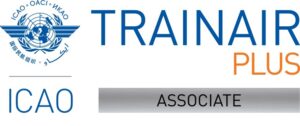Training
Training
DC-ANSP provides ATS training as a certified Approved Training Organization (ATO) and also provides AIS and CNS courses.
DC-ANSP is an ICAO TRAINAIR PLUS Associate Member.


Air Traffic Control.
Air Traffic Controllers maintain a safe and orderly movement of aircraft along major air routes and around airports by giving pilots instructions and advice as to height, speed and direction
Types of Controllers
Aerodrome Controllers guide the aircraft through its arriving or departing phase and assist the aircraft to the gate at the terminal.
Their activities include:
- Controlling Flights onto and off runways;
- Handling the ground movement of planes around the terminals.
Approach Controllers are based at a control center or an airport tower dealing with aircraft movement into and out of an airport. They guide and sequence aircraft into the most efficient order for landing. This includes dealing with instrument landing systems, which allow some planes to make automatic landings, and making sure that planes are placed in holding patterns when airports are busy.
Area controllers are based at control centers. These controllers ensure the safe and smooth flow of traffic along airways at higher altitudes.
The Training to Become an Air Traffic Controller
The training includes:
- Two theoretical modules (Basic and TWR/APP)
- Simulator training
- Intensive on-the-job training
The training delivered is fully ICAO Regulation Compliant and leads to an Aerodrome/Approach Procedural Controller license.
Include the following theoretical subjects:
- Air Law
- Air Traffic Management
- Meteorology
- Equipment & Systems
- Aircraft
- Navigation
- Aerodromes & Ground Aids
- Human Factors
- Abnormal & Emergency Procedures
The theoretical training is followed by extensive simulator training on our state-of-the-art MaxSim Air Traffic Control Tower simulation system. This system incorporates a 9-channel, 270-degree field-of-view, LCD visual system. This enables us to simulate the real-time tower-traffic environment by providing uniform training format for trainees. On-the-Job Training, without simulator training would take much longer to develop the necessary skills and experience in becoming a competent Air Traffic Controller.
The simulation training will grow in workload and complexity to prepare you for the “On-The-Job Training”.
During the “On-the-Job Training” you will be talking to “real” pilots. You will be supervised by an On-the-Job Instructor, coaching and assessing you on your working position. During the “On-The-Job Training” your competencies will be assessed.
The last step to become an air traffic controller is a practical examination to show your competence. Once you have passed you will be a licensed Aerodrome/Approach Non-Radar Air Traffic Controller.
What does it take to be an air traffic controller?
The job has something unique and requires talent. Therefore when you apply, DC-ANSP will take a close look at whether you have the necessary skills to be able to do the job.
Admission requirements
DC-ANSP invite you to apply for the Basic ATC Course to become an Air Traffic Controller at specific times during the year.
If I have no prior air traffic control experience and want to be selected, what must I do?
- You must be between 18 and 26 year old
- Have a minimum of a HAVO-degree with English and Math as primary subjects
Upon qualification you must pass the following selection criteria’s:
- A pre-selection test
- An interview
- An aeromedical examination
- A psychological assessment
- A background check (screening)
DC-ANSP needs exceptional men and women to control air traffic at our airports and in our skies.
This job is for those who are:
- Motivated
- Decisive
- Committed
- Self-Confident
It takes some work to get there, but we’ll give you the training and support you need for a great career. You will work with other DC-ANSP controllers and expert staff dedicated to keeping our skies safe. DC-ANSP wants you to apply and here you will find all the information you need to do that. Come and join us at DC-ANSP!
Do you have what it takes to become an Air Traffic Controller?

